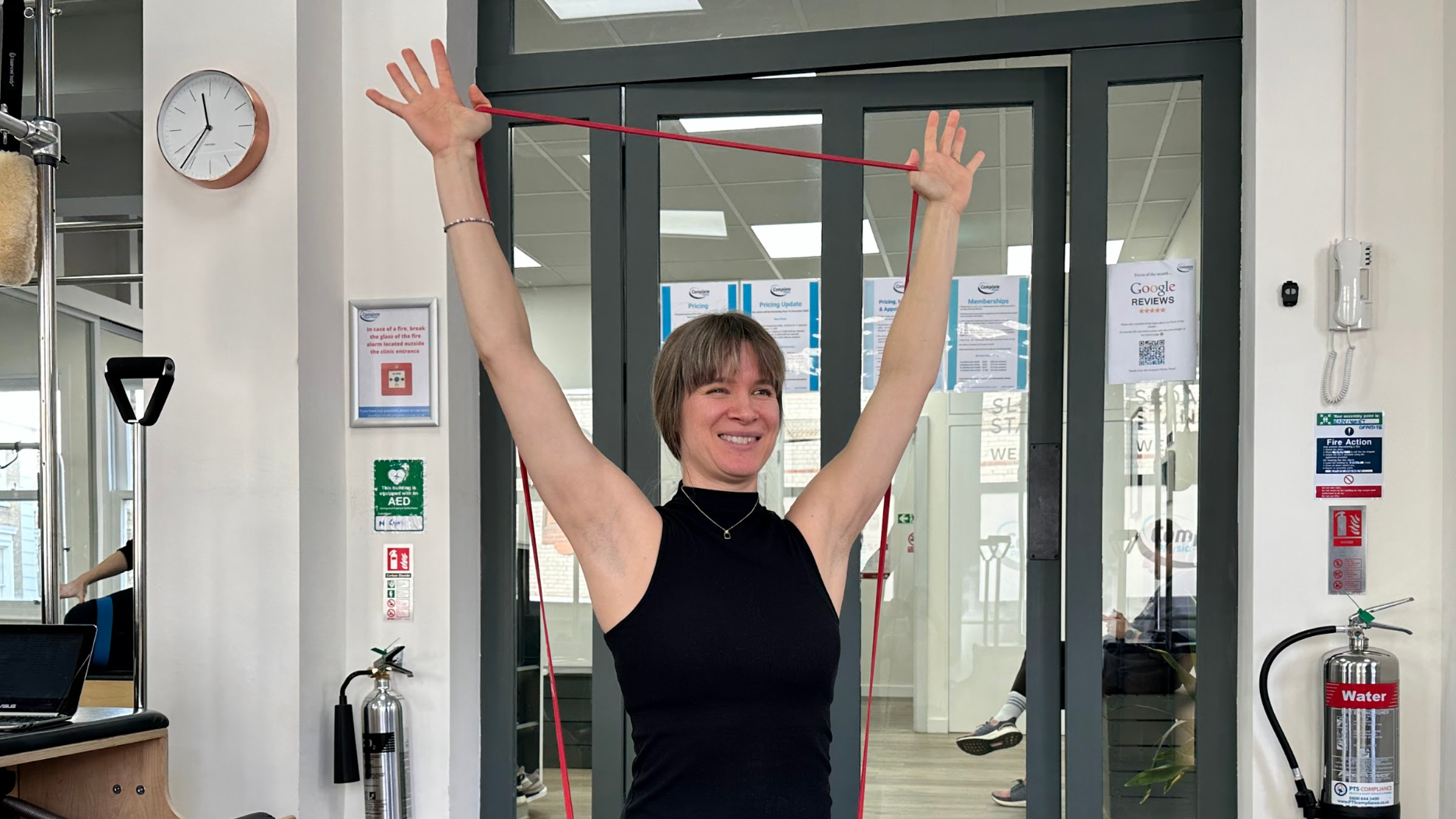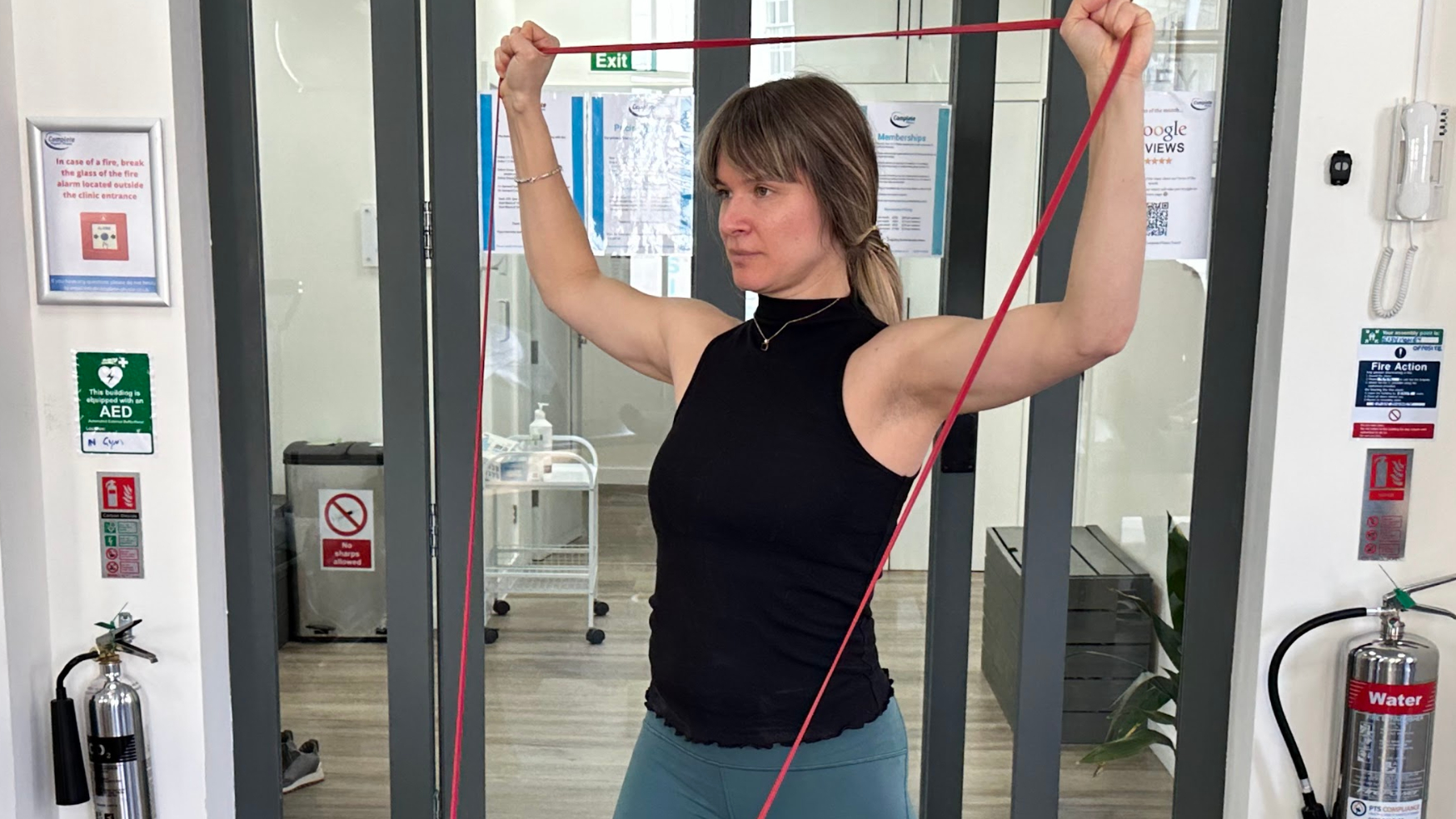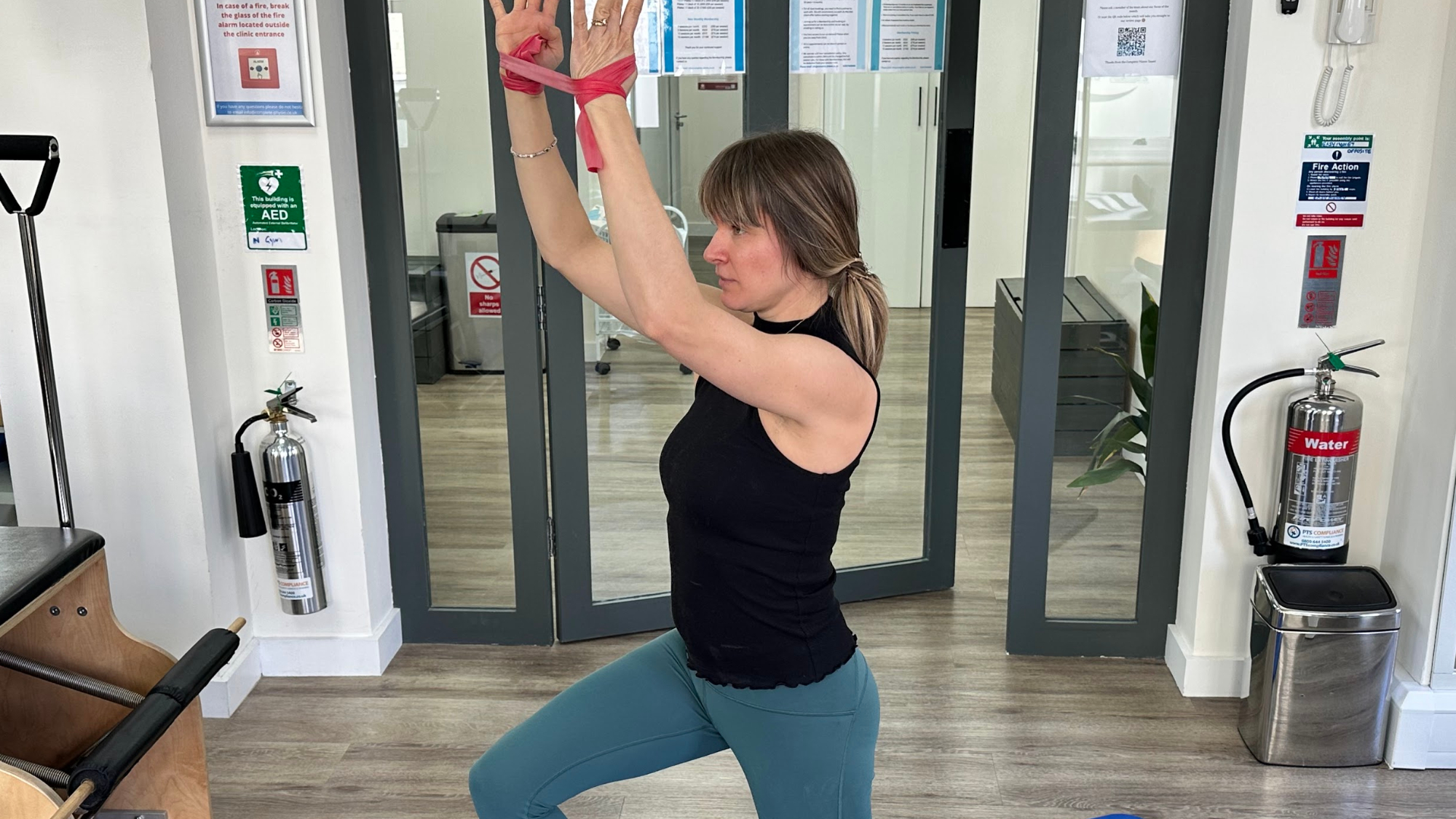You only need six resistance band moves to build stronger arms without weights
This short resistance band arm workout builds upper body strength without weights in just six moves


A resistance band arm workout is a great way to improve upper body muscle and develop stronger arms. But why does this matter? A stronger upper body can make a big difference in day-to-day tasks like bending and lifting.
It improves your range of motion — how far you can move or stretch a body part — and flexibility, which becomes increasingly important as we age. But you don't need a set of weights to get started; a set of the best resistance bands can be a more accessible and affordable option.
"As long as you get the level of resistance right, you should be able to work your muscles until they tire with a band," explains Helen O'Leary, chartered physiotherapist and clinical director at Complete Pilates.
"As the exercises get easier, progress to a harder band or more repetitions to progressively load your muscles, which is the key to strengthening them. [Plus], the resistance increases throughout the movement," adds O'Leary.
Whether you're after a resistance band arm routine you can do from anywhere or a way to move your body between dumbbell leg workouts, we'll take you through O'Leary's six-move resistance band arm workout to strengthen your upper body without weights.

Helen O'Leary is a director of Complete Pilates, a chartered physiotherapist, and Pilates instructor. Before launching Complete Pilates, she began her career as a physiotherapist in professional men's rugby and with Cirque du Soleil.
Six-move resistance band arm workout
Resistance bands are a great alternative to weights, and help develop strength when you're at home, the gym, or while traveling. These affordable bands are versatile, too, as you can take on a resistance band ab workout to build core strength.
Before any exercise routine, getting your muscles ready for some movement with a five-minute warm-up is essential. It's also a good idea to cool down at the end to try and avoid delayed-onset muscle soreness (DOMS).
Start your week with achievable workout ideas, health tips and wellbeing advice in your inbox.
1. Overhead press

According to O'Leary, "this exercise is good for building strength and endurance for overhead positions. Anytime you need to hold your arms overhead for extended periods of time [decorating, lifting boxes onto high shelves], you will need strength here."
"From an aesthetic point of view, this exercise will help define the deltoids, the main superficial shoulder muscles." You can use a large loop or a single resistance band to start and perform the exercise one side at a time.
- Kneel over one edge of the resistance loop.
- Take a high kneeling position, so your bottom is not on your heels.
- Grip the top edge of the loop with your hands, starting with your hands close to your shoulders.
- Press the band straight up toward the ceiling.
- Ensure there is enough tension on the band that you feel you are working against resistance.
- If not, gather more of the band and work with a shorter loop.
- Repeat three sets of 8 - 12 repetitions. Rest up to two minutes between sets.
2. Triceps extensions (kickbacks)

"This exercise is good for strengthening the triceps, the muscles on the backs of your arms. These muscles are really important for pushing strength. They help us do push-ups and [get] ourselves up from a lying position on the floor," says O'Leary.
- Take a high kneeling position on a mat or carpet to protect your knees.
- Loop your resistance band behind your upper back, crossing the shoulder blades.
- Loop the free ends of your resistance band around the thumbs (or grip the ends if you have a single length of the band).
- Make a diamond shape with your thumbs and forefingers, and start with the backs of your hands resting on the forehead and your elbows out to the sides.
- Press the hands up and away in front of you, straightening the arms as you do.
- Repeat three sets of 8 - 12 repetitions. Rest up to two minutes between sets.
3. Chest fly

"This exercise is good for developing the strength of the pectoral muscles, which sit over the front of the chest, underneath the breast tissue," explains O'Leary. "It's a great exercise for improving the strength of the muscles that stabilize the shoulder joint and shoulder blade."
- Loop your resistance band behind your upper back, crossing the shoulder blades.
- Loop the free ends of your resistance band around the thumbs (or grip the ends if you have a single length of the band).
- Start with your arms out to the sides, at shoulder height, ensuring enough tension on the band to challenge you.
- Your elbows are soft and slightly bent, then draw the arms forward without letting your elbows bend or straighten further.
- Slowly return the arms to the start position.
- Remember not to let the band pull you on the return phase of the exercise; you want to control it.
- Repeat three sets of 8 - 12 repetitions. Rest up to two minutes between sets.
4. Reverse fly (single arm bent over)

O'Leary says: "This exercise is great for strengthening the back muscles that stabilize the shoulder blade and the rear deltoids," which are the muscles around the back of the shoulder.
- Secure your band to the side of you on the opposite side to the arm you are working, or hold the end of the band in your free arm.
- Bend your knees into a quarter squat and lean forwards from the hips.
- Start with your arm in the midline of your body and pull the band up and out to the side.
- Slowly control the band as you let the arm come back in.
- Repeat three sets of 8 - 12 repetitions. Rest up to two minutes between sets.
5. Robbers

"This exercise is named for the 'hands up' position that you will end up in at the end of the move. The exercise targets the shoulder's rotator cuff (deep stabilizer) muscles and the back of the shoulder," explains O'Leary.
- Start with the band secured to a sturdy point low to the ground in front of you or adopt a lunge position and secure your large resistance loop under your front leg.
- Your elbows should be bent at 90 degrees.
- Shift your weight onto the back leg and pull the band towards your forehead.
- Try to keep your elbows roughly where they started — the movement is a rotational movement coming from your shoulders.
- Repeat three sets of 8 - 12 repetitions. Rest up to two minutes between sets.
6. Shoulder flexion with lunge

"This is a great full-body exercise improving shoulder strength and function. While isolated arm exercises are important for targeting certain muscles, in reality, the arms don't work in a way that is divorced from the rest of the body," explains O'Leary.
"When you use your legs and feet to push away from the floor, as you do with stepping, squatting or lunging, a neural signal spreads to the muscles of the torso and the shoulder to encourage them to work."
"So doing a leg exercise while doing your arm exercises can give you an extra boost!" adds O'Leary. "The loop of resistance band here serves to add an extra challenge to the rotator cuff muscles (deep stabilizing muscles of the shoulder)."
- Have a mini-band or make a small loop with a light resistance band.
- Loop the resistance band around your wrists and stand with your fists close to your shoulders.
- Step forward into a lunge and simultaneously press your hands toward the sky.
- As you press the arms up, press them outwards into the band's resistance.
- Repeat three sets of 8 - 12 repetitions. Rest up to two minutes between sets.
You can use this six-move routine to strengthen your arms, but you do have options if you want to start working out with weights instead. You don't need a gym to get going, as you just need some dumbbells to take on the best biceps workouts.
It's important to give your body time to recover between workouts, but there are other ways to promote recovery, too. Blending a post-workout shake with one of the best protein powders for weight loss is a great way to give your body all the muscle-building nutrients it needs to grow your muscles.
Maddy Biddulph is a journalist specializing in fitness, health and wellbeing content, with 26 years in consumer media working as a writer and editor for some of the bestselling newspapers, magazines and websites in the US and UK, including Marie Claire, The Sunday Times and Women’s Health UK.
She is a CIMPSA-certified PT and works one-on-one with clients, as well as running Circuits Club classes which mixes cardio and strength training and chair-based exercise classes for seniors.
